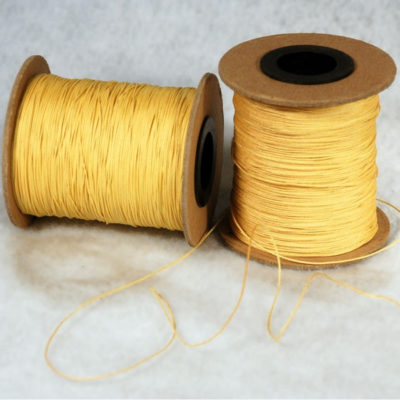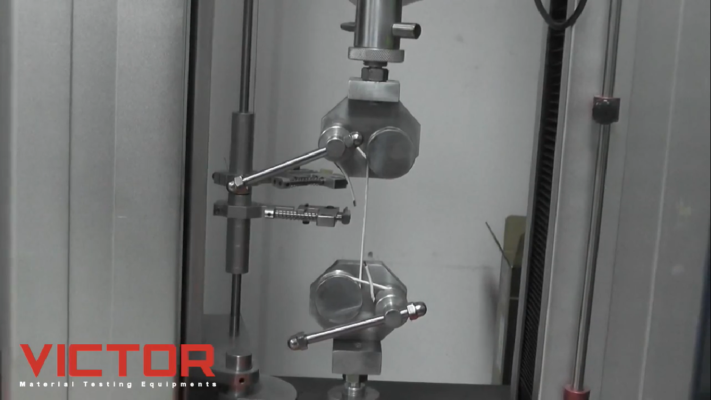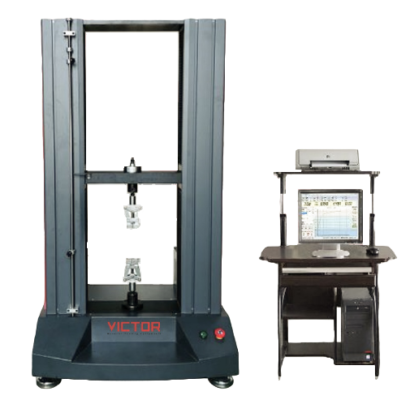ASTM is an international standards organization that is located in the United States of America. The purpose it was introduced to the industry is to publish technical standard agreements for various materials, product, systems and others. Among the ASTM standards that are often use in the industry is ASTM D7269.
ASTM D7269 Test Standard
Description For ASTM D7269
ASTM D7269 is an international test standard design for testing the tensile strength of aramid yarns, cords twisted from such yarns, and fabrics woven from such cords. Actually, this ASTM D7269 covers several variations of procedures for testing aramid yarns and Kevlar type fibers.
There are several types of forms that these fibers can come in including individual fibers, wound yarns, cordage, and fabrics. The yarn or cord can be wound on cones, tubes, coils, chokes, or beams; It can be woven into the fabric, or they can be realize in some other form. Each type of sample requires a different type of grip.
Nowadays, ASTM standards are highly preferred by both corporate or government bodies. In Malaysia, most industries use the ASTM D7269 standard in their companies. The Malaysian government has also adopt this standard.
ASTM D7269 is different compare to ASTM D2256. ASTM D2256 is designated as Tensile Properties of Yarns by the Single-Strand Method. While ASTM D7269 is more specific for aramid yarns and is designated as Standard Test Methods for Tensile Testing of Aramid Yarns.
The difference is the standard calls for extension rate of ASTM D7269 is 50 per cent of the sample length, where the standard calls of ASTM D2256 are 12 inches per minute using a 10-inch sample length. This test can be perform on using Universal Testing Machine (UTM) and also known as a tensile testing machine. The following are the properties measure through ASTM D7269:
- tensile stress
- tensile stress at a given elongation
- ultimate tensile strength
- yield point
- ultimate elongation
More : https://www.astm.org/d7269_d7269m-10.html
Specimens For ASTM D7269
1. Aramid yarns

Grips For ASTM D7269
1. Capstan Grip

Several types of grip solutions can be use to test under this specification. Suitable for wire, thread, yarn etc. This grip is suitable for use as it can reduce clamp pressure and providing essential specimen alignment. The specimens are clamped in the appropriate grips and pulled at a constant rate until failure occurs.
Type of UTM machine
We recommend using UTM machines with a capacity of 5kN-20kN. It depends on the strength of the materials. We also recommend using smaller machines such as dual-column types.
1. VEW 2308
The machine is design by mechanical-electrical integration, the composition of the force-measuring Sensor, transmitter, microprocessor, mechanism of load drive, computer and color inkjet printer. The high-precision electronic motor can be set to five-speed, the components are connected by plug-way, Floor-standing models, it is taken account of modern industrial design and ergonomics in modelling and Coating.
It can be test with all the materials in the stretch, compression, bending, shear, embedded relay, Peeling. tearing, crack, etc, such as rubber, plastics, leather, metal, nylon wire, fabric, paper, aerospace, packaging, construction, petrochemical, electrical, vehicle, etc.
The implementation of standards and standard configuration:
- GB/T4689.20-1996 Measuring fastness of leather’s adhesion
- QB/T2710-2005 Measuring leather’s expansion and the rate of elongation
- QB/T2711-2005 measuring tear force of leather
- QB/T2712-2005 measuring leather’s strength and stretch of spherical crack test
Test Procedure
- Prepare the specimens as describe in the method.
- Load the specimen into the grip.
- Clamp specimen at the top of the grip first then carefully clamp the sample into the bottom grip.
- Use measuring equipment such as a caliper or measuring tape to measure the length of the specimen.
- Make sure the specimen is aligned.
- Zero all the testing machine before starting the test.
- A slight preload may be apply to align the grips and remove slack.
- Start the test with constant rate until its failure/breaks.

